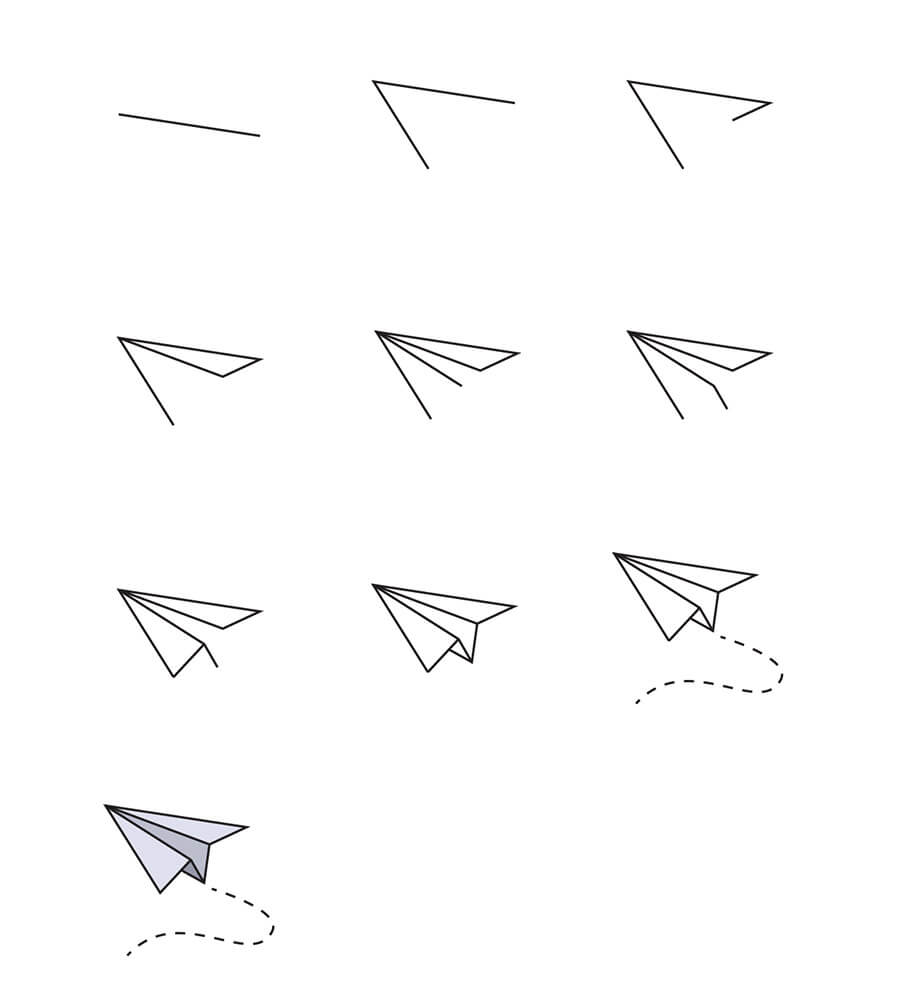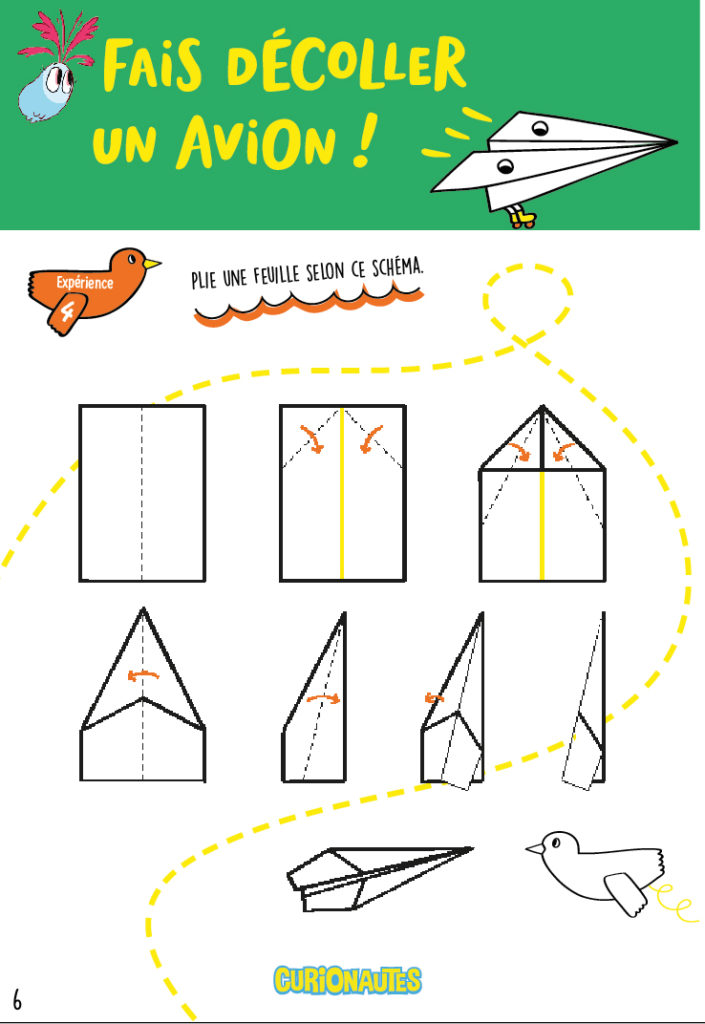How To Master The Art Of Paper Airplane Fabrication: Your Ultimate Guide
So, you're here to dive into the world of paper airplane fabrication, huh? Let me tell you, it’s more than just folding a piece of paper and letting it glide through the air. It's an art, a science, and honestly, a whole lot of fun! Whether you're a curious beginner or someone looking to level up their skills, this guide is about to blow your mind. Think of it as your ultimate roadmap to crafting the perfect paper airplane. Stick around, because we’re about to take off!
Now, let’s be real for a second. Everyone’s made a basic dart-style paper airplane at some point in their life. But have you ever wondered why some planes soar gracefully while others just crumple mid-air? There’s actually a lot of science behind it, and once you understand the principles, you’ll start creating paper masterpieces that can fly farther, faster, and smoother than ever before. This isn’t just about folding paper—it’s about unlocking the secrets of aerodynamics, design, and creativity.
And guess what? By the end of this article, you’ll not only know how to make a killer paper airplane but also impress your friends, family, or even your kids with your newfound expertise. So grab a piece of paper, sharpen your focus, and let’s get started on this wild ride. Are you ready to become a paper airplane fabrication guru?
Understanding the Basics of Paper Airplane Fabrication
Before we dive into the nitty-gritty of folding techniques and design principles, let’s start with the basics. What exactly is paper airplane fabrication? Simply put, it’s the process of transforming a flat sheet of paper into a flying machine capable of gliding through the air. But there’s so much more to it than meets the eye. Each fold, crease, and adjustment plays a crucial role in determining how well your plane will perform.
Key Components of a Paper Airplane
Every paper airplane has three main components: the body, the wings, and the tail. These parts work together to create lift, stability, and control. Here’s a quick breakdown:
- Body: The central structure of the plane that holds everything together.
- Wings: The most important part, responsible for generating lift and keeping the plane airborne.
- Tail: Optional but highly recommended for advanced designs, providing extra stability and balance.
Understanding these components is key to mastering paper airplane fabrication. Each one affects the plane's flight characteristics, so getting them right is essential for success.
Choosing the Right Paper for Your Plane
Not all paper is created equal when it comes to paper airplane fabrication. The type of paper you choose can significantly impact your plane’s performance. For beginners, standard printer paper is a great starting point—it’s lightweight yet sturdy enough to hold its shape. However, as you advance, experimenting with different types of paper can lead to better results.
Types of Paper to Consider
Here’s a list of popular paper options for paper airplane fabrication:
- Printer Paper: A classic choice for its balance of weight and durability.
- Construction Paper: Heavier and sturdier, perfect for larger or more complex designs.
- Tissue Paper: Ultra-lightweight, ideal for creating delicate gliders.
- Craft Paper: Offers texture and strength, great for decorative planes.
Remember, the right paper can make or break your plane. Experiment with different options to find what works best for your design goals.
Mastering the Art of Folding Techniques
Folding techniques are the heart and soul of paper airplane fabrication. Precision and attention to detail are crucial here. Even the slightest mistake can throw off your plane’s balance and affect its flight. Let’s break down some essential folding tips:
Step-by-Step Folding Guide
Follow these steps to create a basic dart-style paper airplane:
- Start with a rectangular sheet of paper, positioned vertically.
- Fold the paper in half lengthwise to create a center crease.
- Unfold the paper and fold the top corners down to meet the center crease.
- Repeat this step with the new top edges to form a point at the top.
- Fold the paper in half along the original center crease.
- Fold the wings down so that their edges align with the bottom edge of the body.
Voilà! You’ve just created your first paper airplane. Practice makes perfect, so keep folding until you’ve got the hang of it.
The Science Behind Paper Airplane Flight
Ever wondered why some paper airplanes fly better than others? It all comes down to science. Aerodynamics, gravity, and thrust are the key factors that determine how well your plane performs. Let’s explore these concepts in more detail.
Key Aerodynamic Principles
Here are the main aerodynamic principles at play:
- Lift: The upward force that keeps the plane in the air.
- Drag: The resistance caused by air pushing against the plane.
- Thrust: The forward motion generated by your throw.
- Gravity: The downward force pulling the plane back to Earth.
Understanding these forces will help you design planes that fly farther and stay airborne longer.
Advanced Design Tips for Paper Airplanes
Once you’ve mastered the basics, it’s time to level up your paper airplane fabrication skills. Advanced designs can take your planes to new heights, literally. Here are a few tips to get you started:
Adding Flaps and Fins
Flaps and fins are great additions to improve stability and control. Here’s how to add them:
- Flaps: Cut small slits in the wings and bend them upward to create lift.
- Fins: Attach small strips of paper to the tail for added stability.
These modifications might seem minor, but they can make a big difference in your plane’s performance.
Customizing Your Paper Airplanes
Why stop at functionality when you can make your planes visually stunning too? Customization is a fun way to express your creativity and make your planes stand out. Here are some ideas to inspire you:
Decorating Your Planes
- Use markers or colored pencils to draw patterns and designs.
- Stick on stickers or washi tape for a pop of color.
- Experiment with different paper textures and finishes.
Let your imagination run wild and create planes that reflect your personality.
Competing in Paper Airplane Contests
Did you know there are actual competitions for paper airplane fabrication? These events bring together enthusiasts from all over the world to showcase their skills. If you’re serious about taking your hobby to the next level, consider entering a contest. It’s a great way to challenge yourself and learn from others.
Tips for Winning Competitions
Here are a few tips to help you succeed in paper airplane contests:
- Practice consistently to refine your folding techniques.
- Experiment with different designs to find what works best.
- Pay attention to details like weight distribution and wing shape.
Remember, practice and perseverance are key to success in any competition.
Common Mistakes to Avoid in Paper Airplane Fabrication
Even the best paper airplane makers make mistakes. The key is to learn from them and improve over time. Here are some common errors to watch out for:
Avoiding Common Pitfalls
- Improper Folding: Make sure your folds are crisp and precise.
- Unbalanced Weight: Ensure the weight is evenly distributed across the plane.
- Overcomplicating Designs: Keep it simple, especially when starting out.
By avoiding these mistakes, you’ll be well on your way to creating flawless paper airplanes.
Conclusion: Your Journey in Paper Airplane Fabrication
So there you have it, folks! You’ve now learned the ins and outs of paper airplane fabrication. From understanding the basics to mastering advanced techniques, you’re equipped with the knowledge to create planes that fly farther, faster, and smoother than ever before. Remember, the key to success is practice, patience, and a willingness to experiment.
Now it’s your turn to take action. Grab a piece of paper, follow the steps outlined in this guide, and start folding. Share your creations with friends, family, or online communities. Who knows? You might just inspire someone else to join the world of paper airplane enthusiasts. Happy flying!
Don’t forget to leave a comment below sharing your favorite paper airplane design or any tips you’ve discovered along the way. And if you enjoyed this article, feel free to share it with others who might find it useful. Let’s keep the spirit of paper airplane fabrication alive and thriving!
Table of Contents
- Understanding the Basics of Paper Airplane Fabrication
- Key Components of a Paper Airplane
- Choosing the Right Paper for Your Plane
- Mastering the Art of Folding Techniques
- The Science Behind Paper Airplane Flight
- Advanced Design Tips for Paper Airplanes
- Customizing Your Paper Airplanes
- Competing in Paper Airplane Contests
- Common Mistakes to Avoid in Paper Airplane Fabrication
- Conclusion: Your Journey in Paper Airplane Fabrication

Paper Model of an Airplane DIY Craft

Comment dessiner Un avion en papier Dessin Facile

Fabrique des avions en papier ! Curionautes des sciences